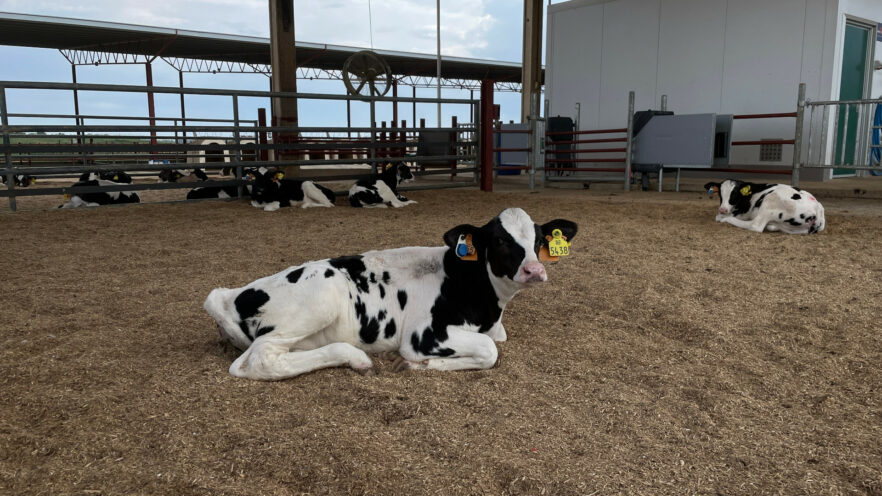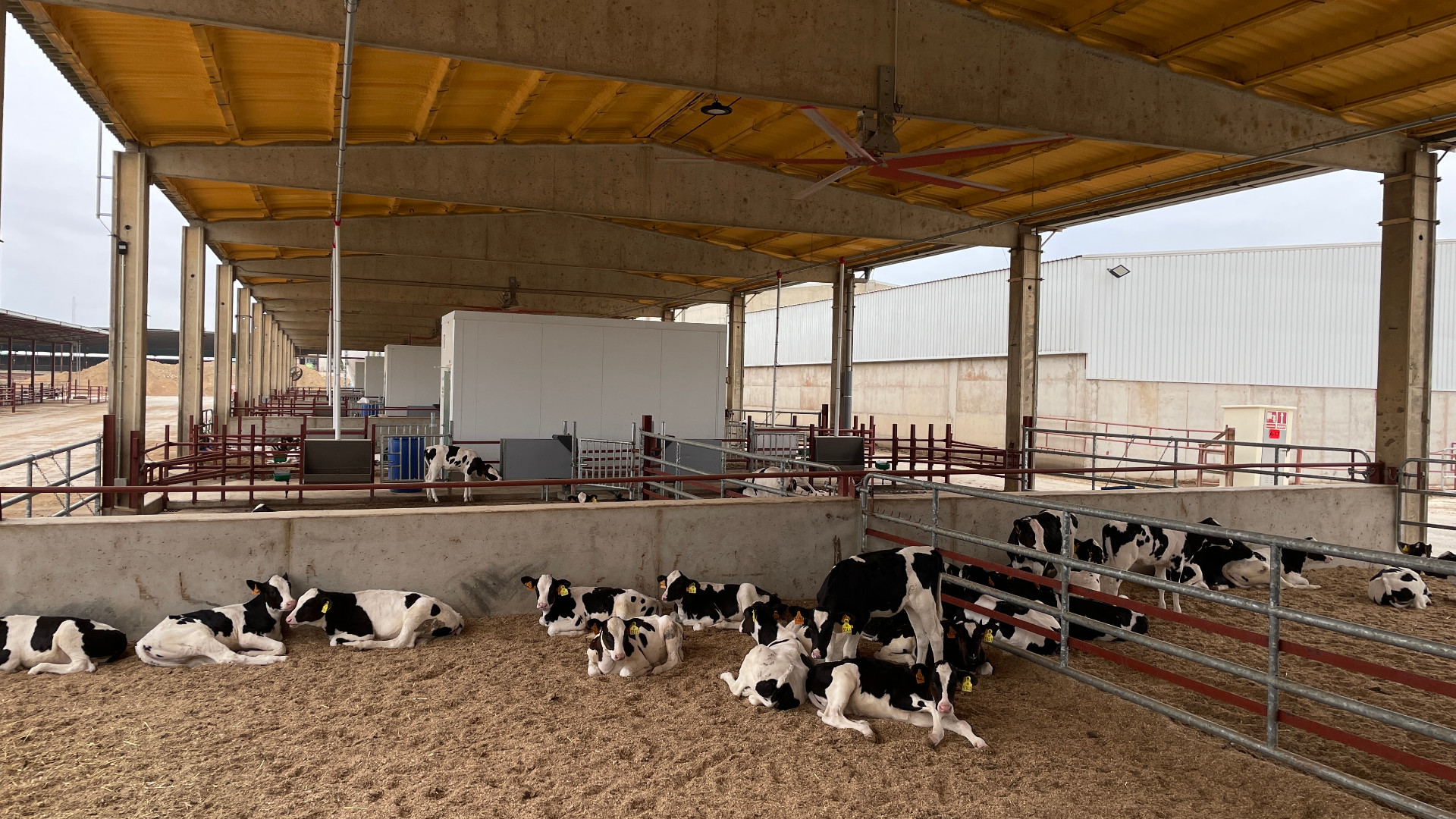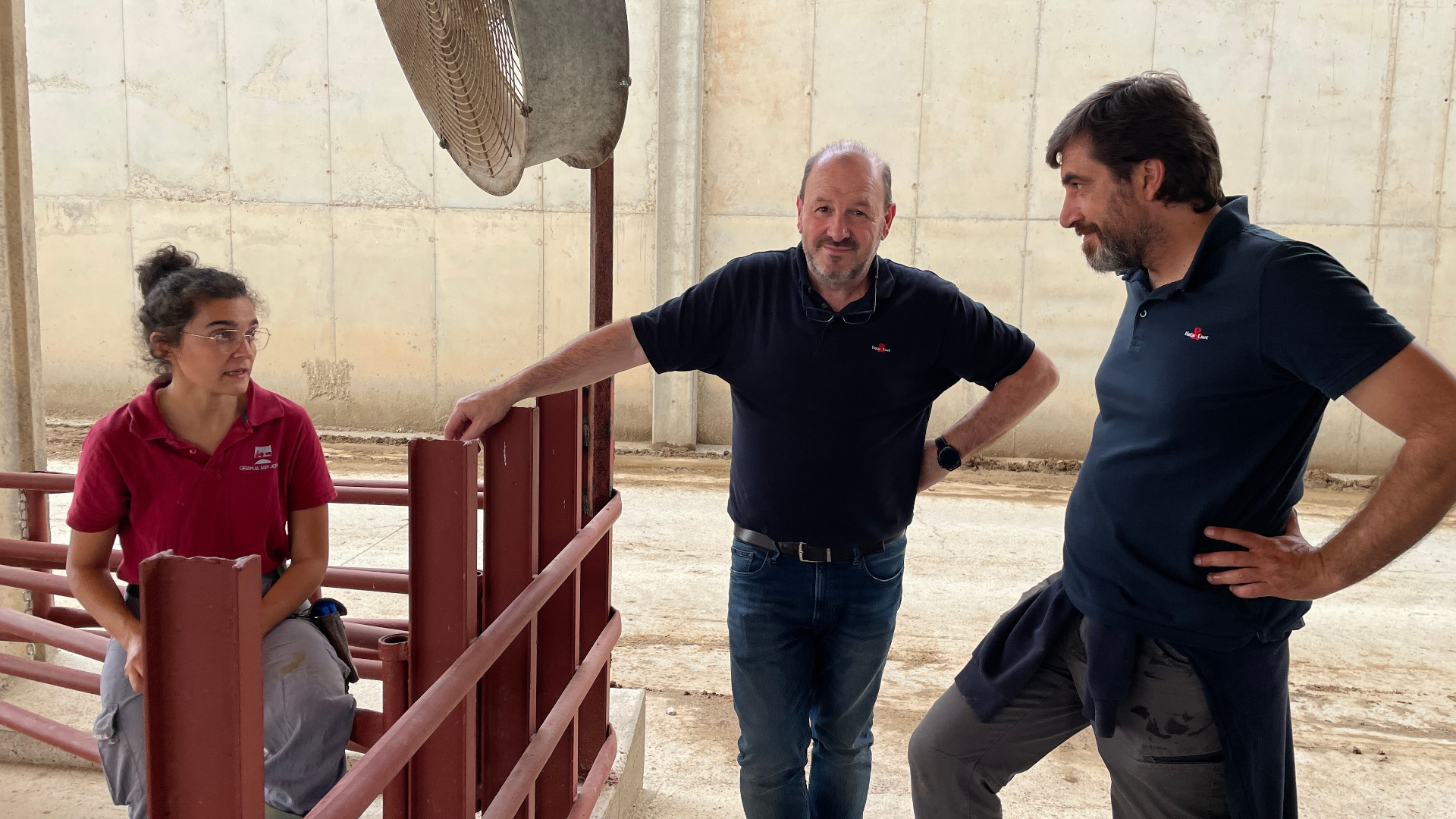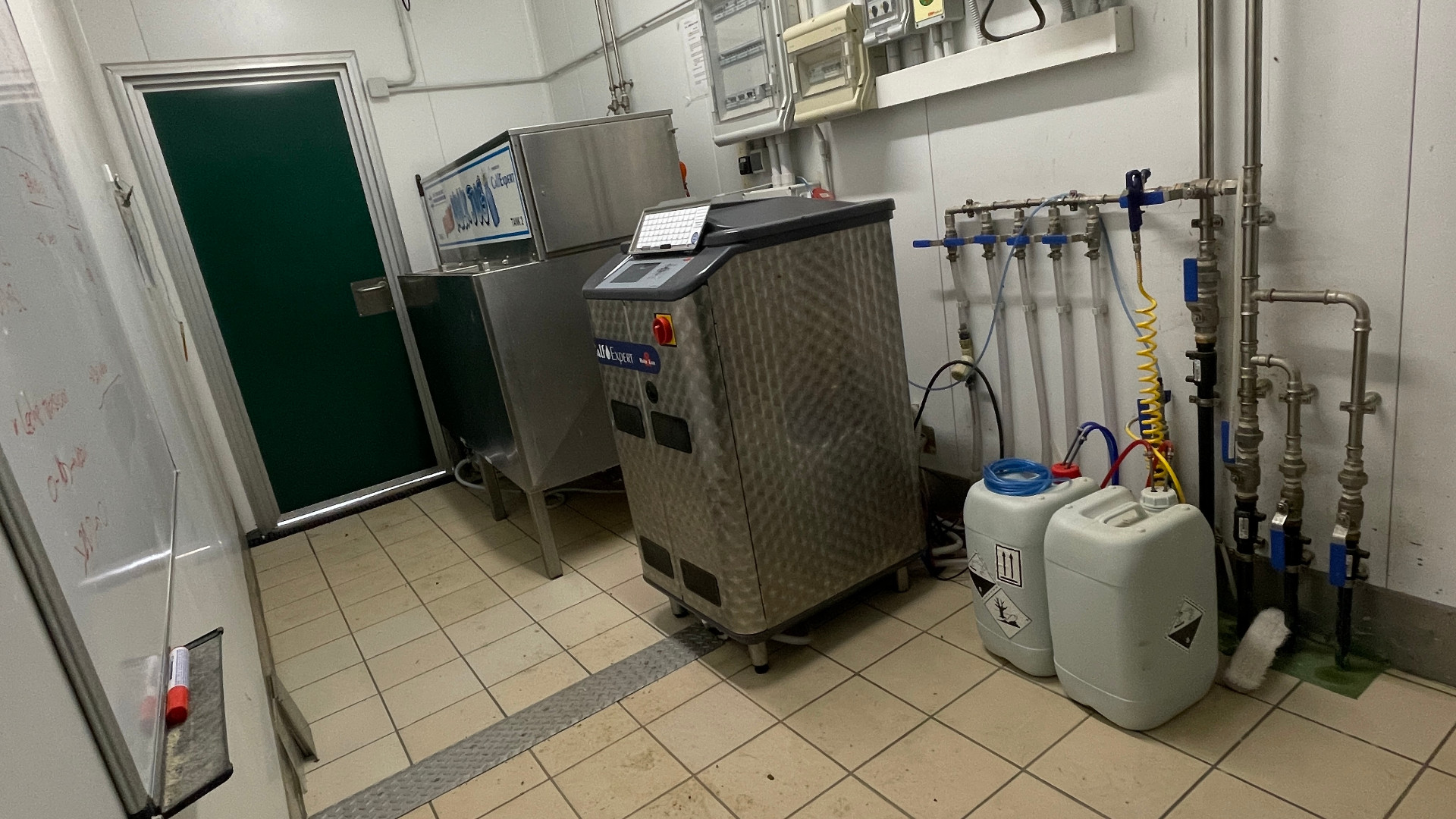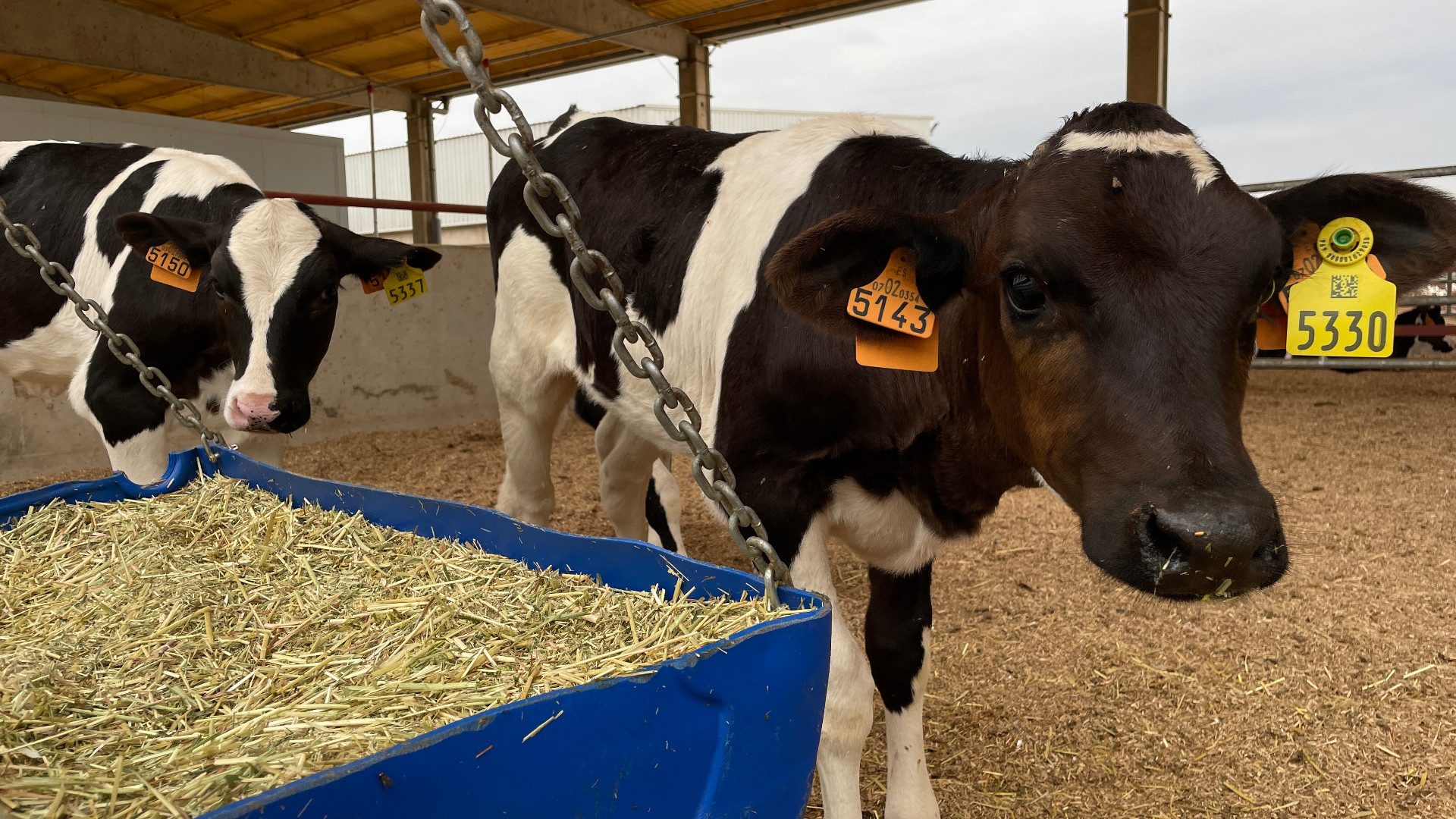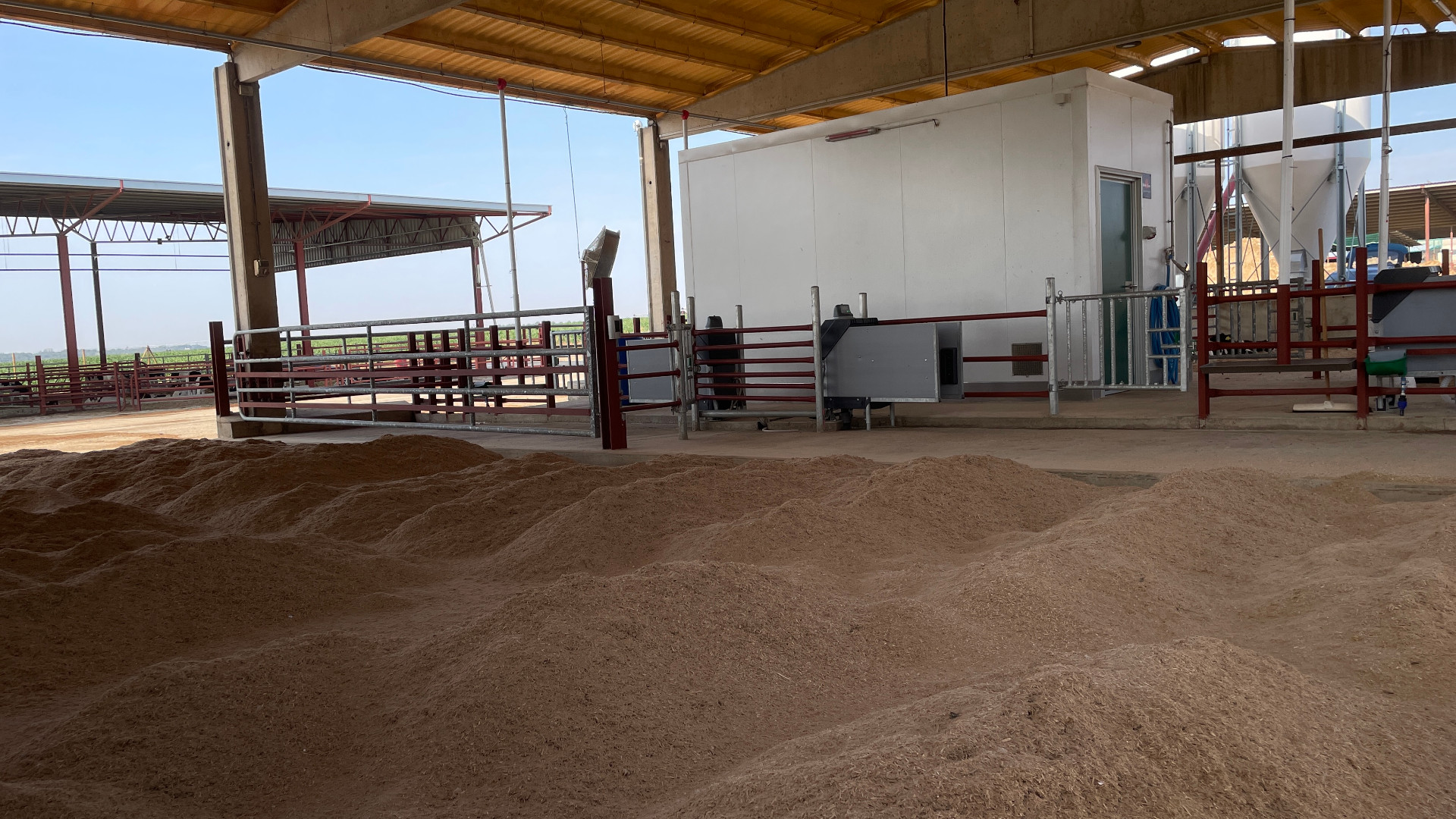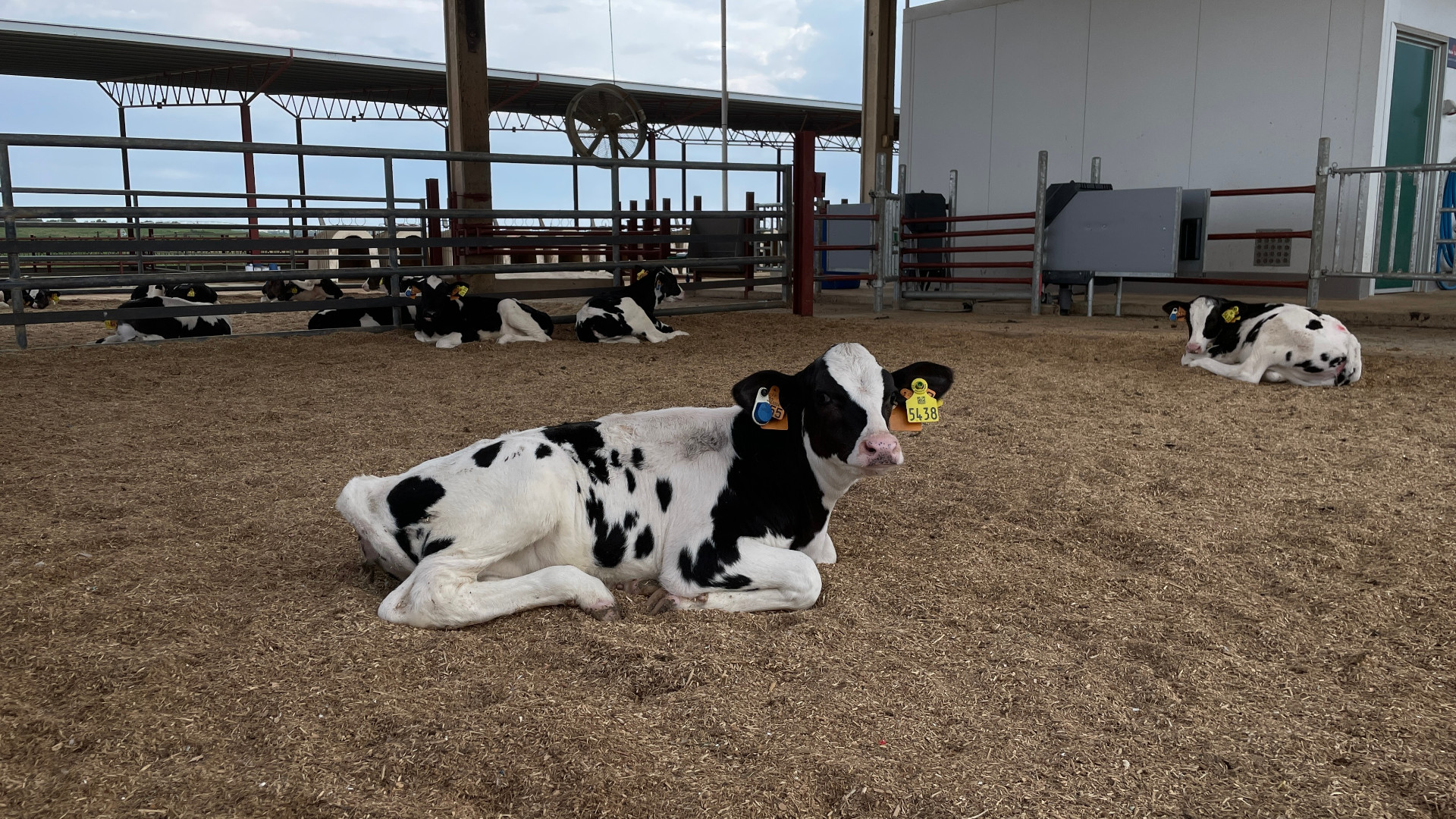"Our calves' welfare is my top priority"
5. Juli 2024 — Calf Feeding, Practice report, Calf feeders — #Colostrum #CalfExpert #NativeCalfConcept #Spain #GainsThe dairy farm with 3,700 cows is located in the north-west of Spain. It is a hot, dry region that relies heavily on irrigation for its agriculture. Maize, lucerne and forage grass are the main crops grown here.
Luz López Sales is the veterinarian responsible for rearing the young animals. The calves' welfare is close to her heart. Not only for ethical and moral reasons, but also because she knows that calves that develop well will later grow into high-performance cows. This is why the farm invested in a new calf barn with 6 CalfExpert automatic feeders last year.
Article content:
The old rearing method was not ideal
Calves used to be kept in individual hutches. These hutches were not suitable in summer because they would become too hot. Even providing shade did little to alleviate the calves' heat stress. The calves were only bottle-fed 3 litres of milk twice a day due to reasons of labour efficiency. Weaning off milk occurred very abruptly after 8 weeks by simply skipping a feed.
It was a typical Californian system. However, the performance was unfortunately unsatisfactory. The daily weight gain barely exceeded 700 g. The work was also arduous. The veterinarians had to climb over the fence for each step of the work, which is really exhausting for a vaccination campaign with 100 calves.
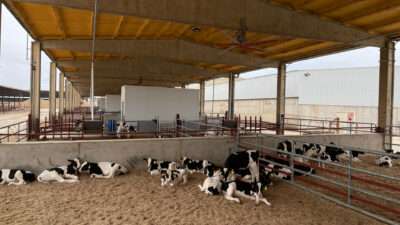
The turning point came when the farm owner spoke to Jordi Comas from Trivic, the Holm & Laue representatives in the region, at the EuroTier trade fair. He liked the concept of rearing the calves in groups at automatic calf feeders right from the start. And Luz, his veterinarian, has also encouraged him in his decision, as she is well aware of the scientifically proven benefits of group housing.
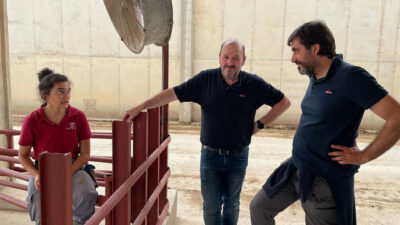
A general concept was therefore developed in co-operation between the dairy farm, the service partner Trivic and Holm & Laue based on the NativeCalfConcept (NCC). The practical implementation took place here on this farm in a number of steps:
Birth management and colostrum provision
Very good immunisation is the basis for successful breeding. This is why the calves are given 4 litres of high-quality colostrum immediately after birth. This is followed by another 2 litres of colostrum after 12 hours at the latest. The two next feeds consist of transit milk and whole milk.
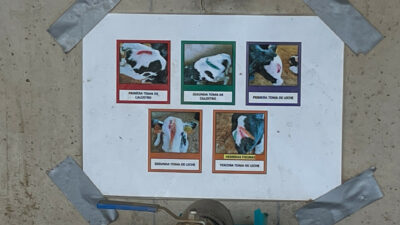
A practical tip: since the calves are already kept together in small groups, you can mark the calves with coloured wax crayons as soon as they have had a feed. A different colour is used for each of the 4 different feeds.
CalfExpert automatic feeders on the third day
The calves are put together in groups of a maximum of 12 animals from day three. Each group is finalised within a maximum of 3 days. The slight age difference and plenty of space (over 4 square metres per calf) minimise stress. The calves are very calm and interact a great deal with each other. Training on the CalfExpert at the age of 3 days reduces the workload. This avoids the need for double training (first at the drinking bucket/bottle and then again at the calf feeder). The calves very quickly learn how to use the HygieneStation. The CalfExpert injects a small amount of milk into the calves' mouths as an aid to learning, and they then usually start feeding straightaway. Luz' team was initially sceptical as to whether the calves would learn this at such an early age, but all the animals know how to do this after just 2 or 3 training sessions. Luz sees this alone as confirmation: calves do better when they can be together with others from an early age.
8 to 10 litres of milk a day
The high quantity of milk offered to the calves is unusual for Spain. They start with 8 litres in the first week before moving on to 10 litres a day in the second week. Luz' goal is a daily weight gain of 1,000 g. This is not possible with such young calves without high quantities of milk.
First whole milk, then milk replacer
Feed transitions should be relatively slow and gradual, which is why Luz begins with pasteurised whole milk, because the young calves are used to it and because she knows that they can digest it easily.
The DoubleJugs in use here quickly convinced them. The double-chamber system means that the milk supply never runs out and employees can top up more whole milk at any time.
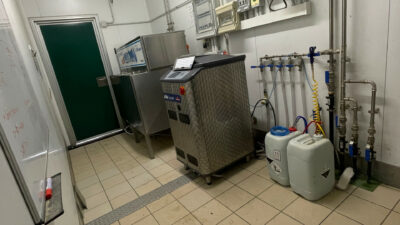
Milk replacer is only used after 3 to 4 weeks. Luz has set the feed curve so that the transition phase lasts 10 days. "We used to allow 5 days, but that was too short and resulted in diarrhoea," Luz emphasises.
Concentrated feed and straw for optimum rumen development
Concentrated feed pellets are offered right from the start. These are joined by chopped straw and hay after 20 days. Without roughage, the calves used to eat too little until they were weaned and also ruminated poorly. "Now their rumens are better prepared and they also eat less bedding because they have a clean source of roughage," Luz notes.
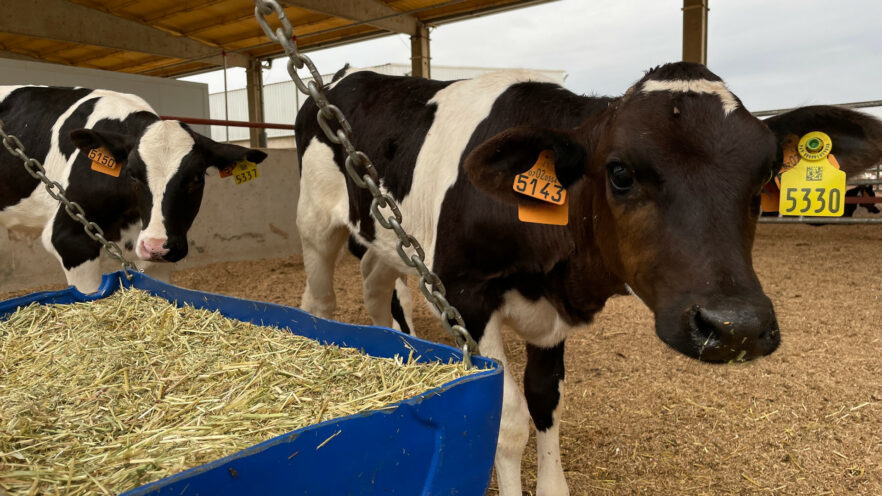
The performance data is impressive
The calves in the new barn are already growing at an average rate of 900 g per day. This is significantly better than before, but we're not there yet"
The calves are weighed three times as they grow up. This is an important step, as the success of the rearing process can only be determined by considering growth. Other CalfExpert data is also included when assessing the calves. This is because Luz now has access to information about her calves that she never used to have. For example, individual drinking behaviour and drinking speed, frequency of visits and drop-out rates.
This enables Luz, together with the other herd managers, to take suitable selection decisions for calves as young as 3 months old.
From manual to mental work
The nature of the work has changed a lot. Instead of feeding the calves with bottles of milk twice a day, the team members simply have to check the calves and retrain them where necessary.
Concentrate feeding has also been automated. The troughs are filled almost automatically via a pipe system at the touch of a button. There is also no need to provide water because the calves have their water troughs in the group box.
The only other task apart from monitoring is the manual cleaning of the walkways.
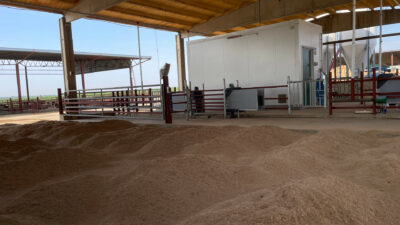
Yet Luz had to learn something new right at the beginning: "We veterinarians had to familiarise ourselves with the new pathogen transmissions within the group. But we have our calves' health under control after we adapted our vaccination programmes."
The roof and the installed fans are very practical not just for the calves in summer. The employees also appreciate the cool and airy workplace.
"My colleagues now need to think more than work hard. We've transformed their job from manual to mental work. And that goes down well with the team," Luz concludes.
